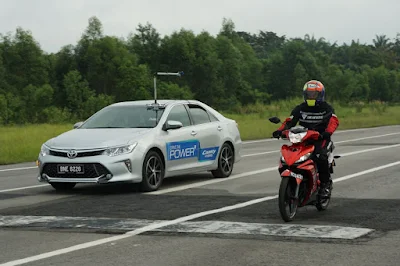March 12, 2018
Blindspot Detection Now Part of ASEAN NCAP Safety Standards
The ASEAN New Car Assessment Program or NCAP is now including blindspot object detection as part of its safety assist technology test under its revised ASEAN NCAP 2017-2020 protocol. Blindspot technology (BST) is now a requirement to obtain points for a higher ASEAN NCAP rating and aims to reduce motorcycle fatalities across the ASEAN region.
Blindspot technology or BST aims to eliminate collision with other vehicles, especially motorcycles, coming from either the side or rear of the vehicle when they are the in the blind spot zone of a car. By having BST, the system will be able to warn the driver that a motorcycle or any other vehicle is approaching. This will help deter a collision from occurring especially when the car is about to perform a lane change or make a turn.
In Malaysia, where the ASEAN NCAP operates from, motorcycle fatalities are the highest among road users with 4,348 deaths annually. The number comprises 64.5 percent from the total number of recorded deaths at 6,740. Compared to the rest of ASEAN, the World Health Organization (WHO) estimates that 34 percent of total road fatalities happen with 2-3-wheeled vehicles. This is significantly higher than passenger car deaths at just 16 percent.
Currently, the ASEAN NCAP is devising a standardized test for BST systems based on the global requirement set by the United Nations (ISO 17387). Two types of assessment will be formed: one during the day and the other at night. With this, the organization hopes to test the effectivity of various BST systems, particularly during lane changing action even at zero lighting situations.
Among the first vehicles tested are from Toyota, Honda, Mazda, Volvo, Mercedes-Benz, and Hyundai.
Subscribe to:
Post Comments (Atom)


No comments:
Post a Comment
Feel free to comment or share your views. Comments that are derogatory and/or spam will not be tolerated. We reserve the right to moderate and/or remove comments.